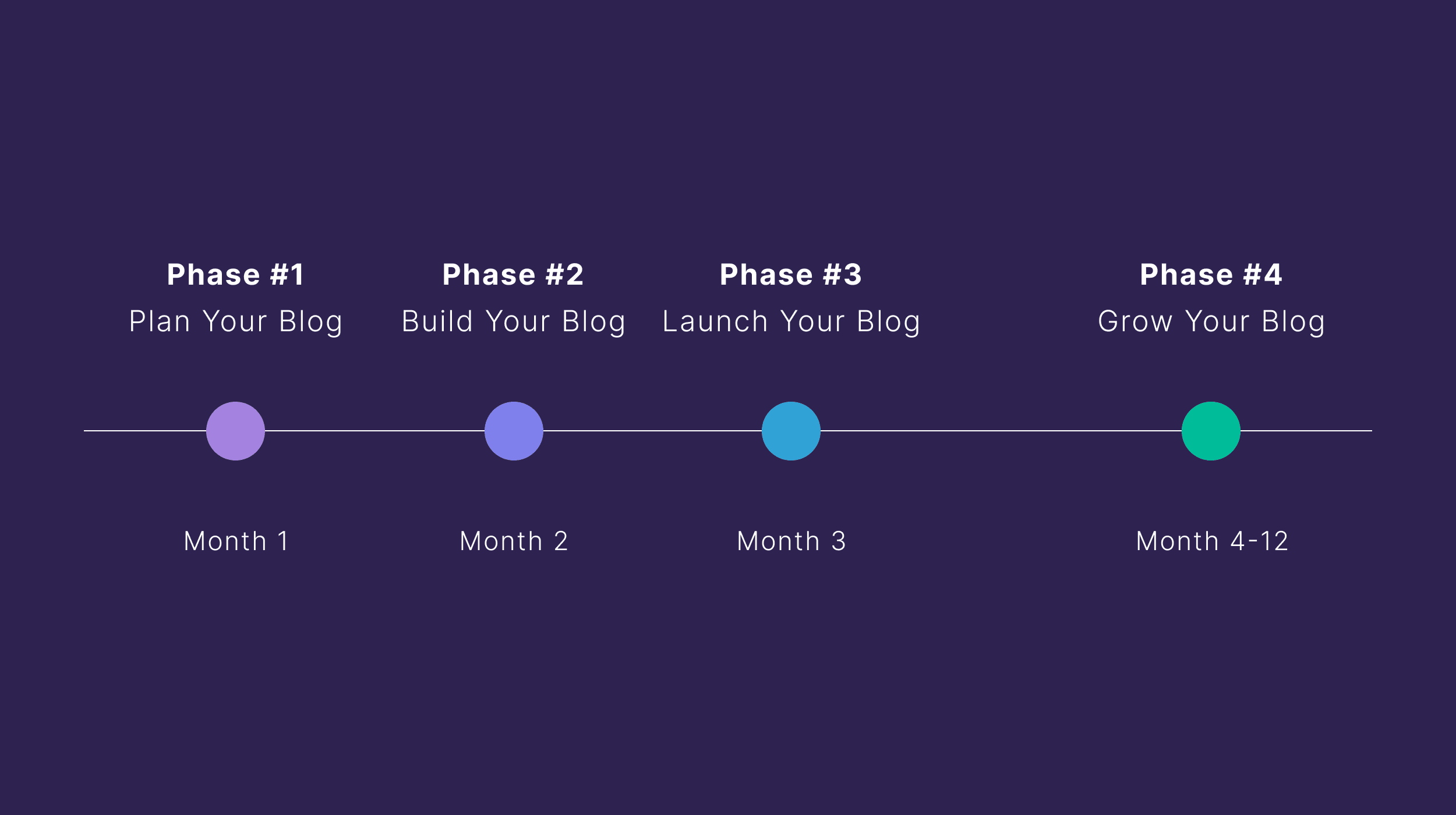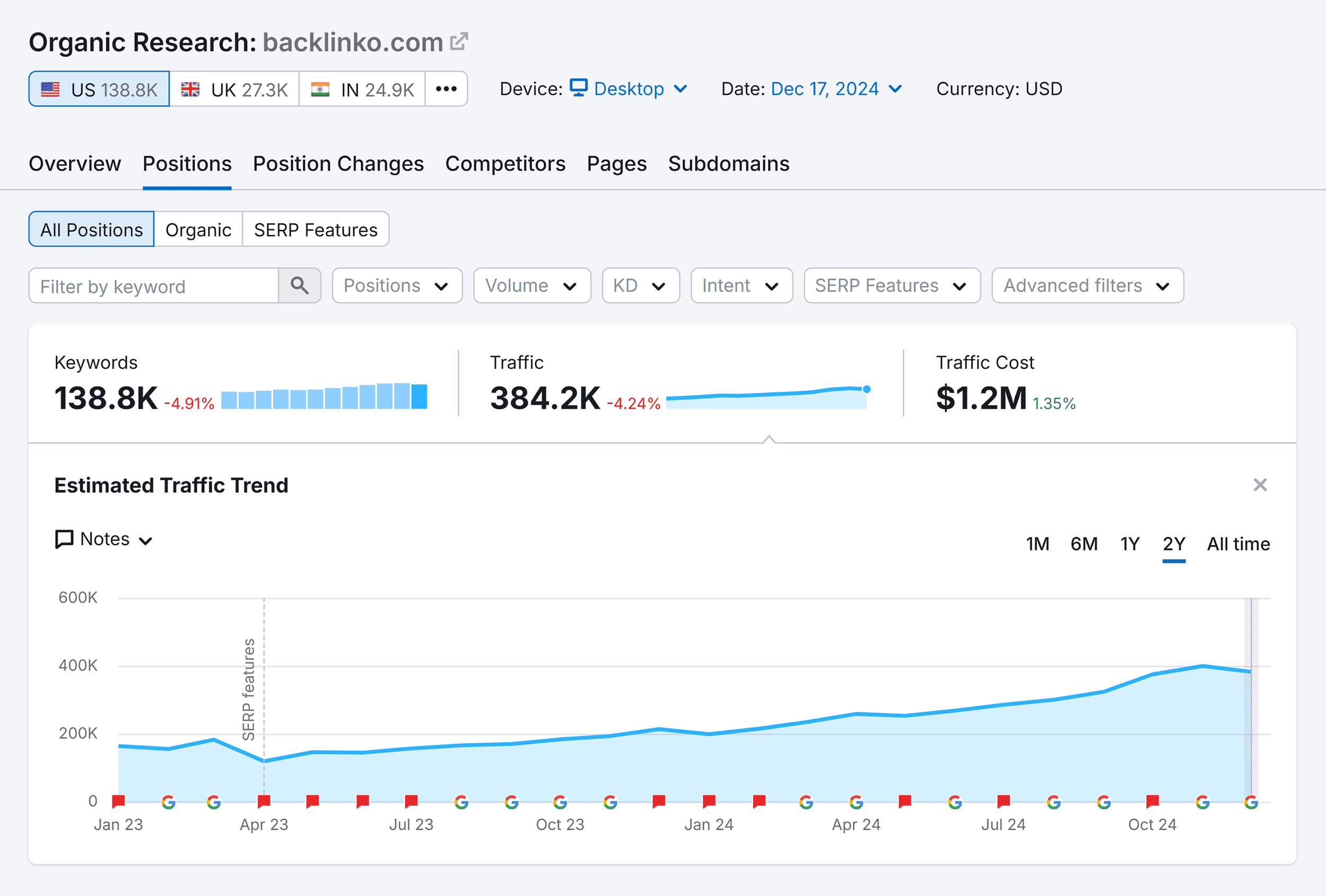In the long term, the way you get more organic traffic is this: create more content about stuff people are searching for and build links. The problem is that it takes time.
If you want to get more organic traffic fast, you need to squeeze more juice out of what you already have. These seven tactics will show you how.

From here, you can eyeball the list for topics where searchers would expect fresh information and update them. Our page on “top Google searches” is a good example because searchers don’t care what people searched for in 2021. They want to know what’s popular today.
Dead pages are pages that no longer exist on your site. If they have backlinks, this is a huge waste of link equity.
Usually, backlinks are slow and hard to get. After all, they’re one of the strongest ranking factors. But with this technique, you’re in control of the backlinks—so you can give your SEO a boost fast.
- Go to Ahrefs’s Site Explorer and enter your domain.
- Go to the Best by links report.
- Add a 404 filter.

Next, redirect these broken pages to relevant live pages on your site. If a page has been removed by accident, consider reinstating it. The whole process goes like this:

Not sure how to do a redirect? Read our guide to redirects for SEO.
Internal links are links from one page on the same domain to another.
One of their main roles in SEO is that they aid the flow of PageRank (aka “link equity”). This means that you can use internal links to give pages on your site an SEO boost.
For example, we’ve linked from our free backlink checker tool to some of our articles on link building with the aim of boosting their rankings.

The key to making this work is to link between relevant pages. Ahrefs Site Audit identifies these automatically:
- Go Site Audit and choose the site you want to work on.
- Open the Internal link opportunities tool.

Pay particular attention to the source page, keyword context, and target page columns. These tell you which page to link from, link to, and where on the page to add the link.
For example, there are a few relevant internal links we can add from our list of SEO statistics:

Further reading
A featured snippet answers the searcher’s question with a short answer. Example:

Since Google shows them on top of other results, this can be your shortcut to the very top.
You stand the best chance of winning the snippet for keywords where you rank 2-8, and Google already shows a featured snippet. Here’s how to find them:
- Go to Ahrefs’ Site Explorer and enter your domain.
- Open the Organic keywords report.
- Filter for Position 2-8 and SERP features where the target doesn’t rank.
- Sort the results by Volume high to low for prioritization.

Winning the snippet comes down to providing more helpful information than what’s already ranking: fresher data, a more accurate answer, a more comprehensive definition of a term, etc.
Unfortunately, there is no silver bullet here, but you’ll find some good tips in our guide to featured snippets.
People want content in their native language when they search Google—even if their search is in English. Google knows this, and use’s the search’s location and language preference to personalize results.
For example, when I search for “link building,” I get Polish results. This is because Google knows I’m in Poland.

Despite us having a guide to link building, Google doesn’t rank it for me because it’s in English. By translating it into other languages, we could improve its reach and earn more organic traffic.
This is what we did for many of the posts on our English blog.
For example, the Spanish translation of our post about affiliate marketing brings in an estimated 8K organic visits each month.

If you want to follow in our footsteps, the best way to get started is to translate your top-performing content. The idea here is that if people are searching for a topic in one language, there are probably people searching for it in other languages.
Here’s how to find your top-performing pages in organic search:
- Enter your domain into Ahrefs’ Site Explorer
- Go to the Top Pages report

You can then ask ChatGPT how someone who speaks another language might search for the topic:

From there, you can simulate a local search for the topic in Google with Ahrefs SEO Toolbar and look at the estimated traffic to the top-ranking pages. This will help you to understand roughly how much traffic potential the topic has in that language and locale.
For example, the top-ranking post about free keyword research tools in French gets an estimated 714 organic monthly visits from France—so it might be worth translating:

If you can make your titles more compelling to the searchers, you can get more clicks even if your rank stays the same.
With this technique, you’re going to see the biggest lift in content that already brings you traffic. You can find these pages in the Top Pages report in Ahrefs’ Site Explorer, or Google Search Console click data.
For us, our list of free keyword research tools gets the most traffic:

Here’s our current title for that post:
The 9 Best Free Keyword Research Tools
Let’s see if ChatGPT can come up with something more interesting and enticing. Here’s the prompt I’ll use:
Give me 10 ways to make this title more interesting and enticing to click: “[current title]”. Keep them under 70 characters. Mention the keyword “[target keyword]” in each one.

I don’t love all of these, but “Boost SEO for Free: 9 Essential Free Keyword Research Tools” sounds like a slight improvement on our current title. It might be worth us switching it out and monitoring if there’s any increase in clicks.
Further reading
Schema markup is code that helps Google understand the information on a page, which can be used to show rich results (also known as rich snippets).

As you can see above, results with schema are more visually compelling, and because of that, they can often earn more clicks.
Sidenote.
Schema is not a ranking factor. The idea here is to get more clicks to pages that already rank.
There are basically two ways of adding schema to your pages:
- Use your CMS or a plugin. Just fill out some information, and it’ll add the code for you.
- Use a schema markup generator. There are plenty of these around. Just Google it. The benefit here is that you can probably better customize your schema than in the first option. The downside is that you have to add the code yourself.
Either way, it’s always best practice to validate your code. Again, two options here:

Further reading
You can find some more tips on SEO in:
Questions or comments? Find me on X.
Content Copyrights Belong to The Author. All Rights Reserved.
We're A Dallas Digital Marketing Agency That is Experts At Social Media Marketing, Website Design and Emarketing and Promotion.



